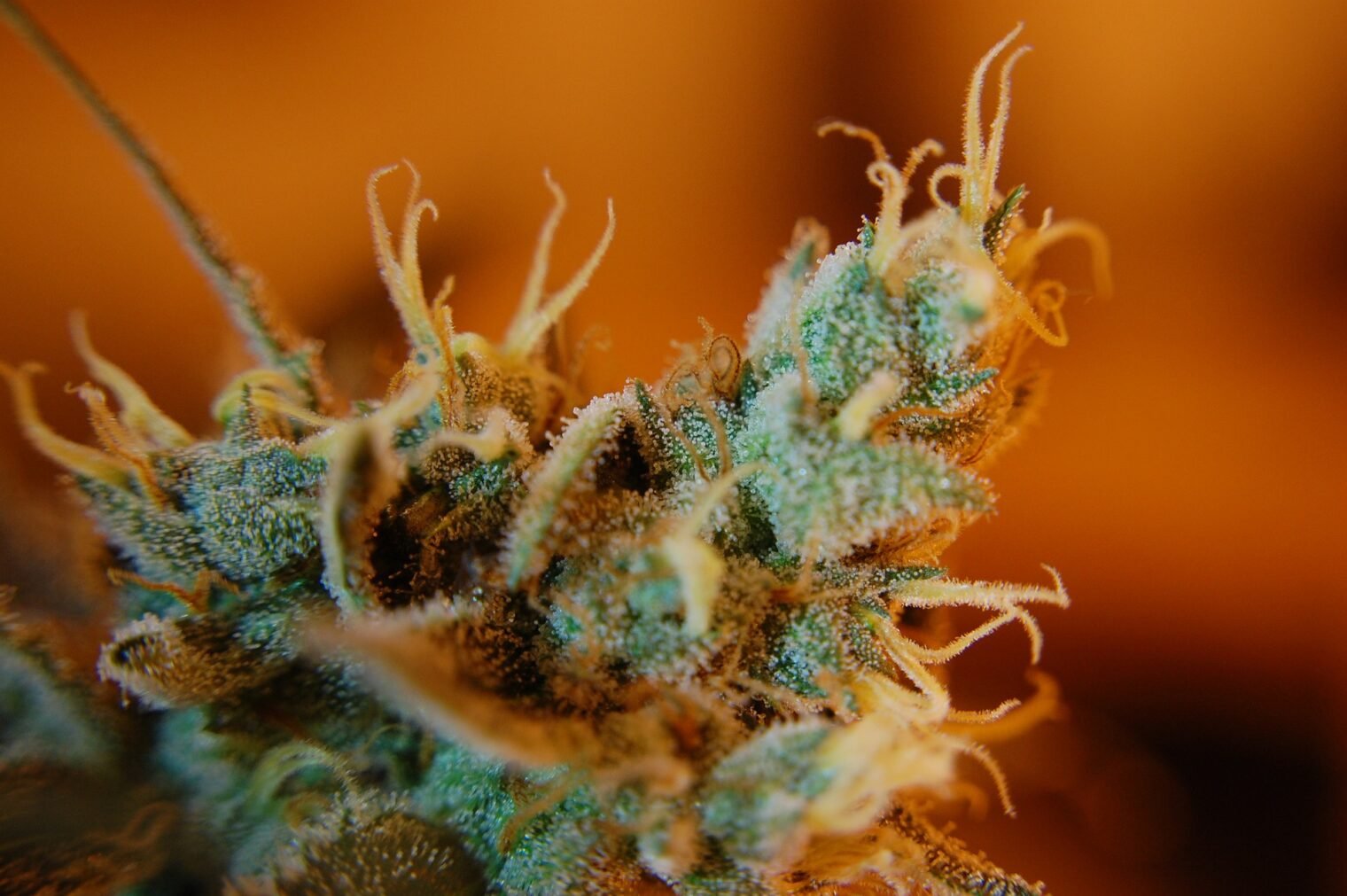What Are Cannabis Trichomes? And What Do They Do?

Table of Contents
We are only just starting to learn about cannabis trichomes and what they do. Cannabis is a plant that has been cultivated and consumed for centuries. It contains a hidden world of tiny structures that play a crucial role in its potency and therapeutic properties. These structures, called trichomes, are the unsung heroes of the cannabis plant, responsible for producing the cannabinoids, terpenes, and other compounds that give cannabis its distinctive aroma, flavor, and effects.
In this article, we’ll delve into the fascinating world of cannabis trichomes, exploring what they are, their different types, and the essential functions they serve in the plant’s life cycle and in our experience as consumers.
The Basics of Cannabis Trichomes
Trichomes, pronounced “try-kohms,” are microscopic hair-like structures that grow on the surface of the cannabis plant, most prominently on the flowers, leaves, and sometimes even on the stems. These structures are responsible for producing the essential compounds found in cannabis, which include cannabinoids like THC and CBD, as well as terpenes, flavonoids, and other phytochemicals.
Trichomes serve various functions in the plant’s life, but their primary role is protection. They act as a defense mechanism against pests, herbivores, and harsh environmental conditions. The production of cannabinoids and terpenes by trichomes helps deter predators and pathogens, while their resinous texture makes it challenging for insects to crawl onto the plant’s surface.
Different Types of Cannabis Trichomes
Cannabis plants possess several types of trichomes, each with its unique structure and functions. The three main types of cannabis trichomes found on the plant are:
- Bulbous Trichomes: These are the smallest of the trichome types, typically measuring around 10-30 micrometers in size. Bulbous trichomes are found throughout the plant but are most concentrated on the lower parts of the leaves. They are responsible for producing some cannabinoids and terpenes but in relatively smaller quantities compared to the other trichome types.
- Capitate-Sessile Trichomes: These trichomes are slightly larger than bulbous trichomes, with a glandular head attached directly to the plant’s surface. They are present on both the leaves and the flowers but become more abundant on the latter as the plant matures. Capitate-sessile trichomes are the primary producers of cannabinoids and terpenes and play a significant role in the plant’s overall potency.
- Capitate-Stalked Trichomes: These are the largest and most prominent trichomes, measuring between 50-100 micrometers in size. Capitate-stalked trichomes have a long stalk that supports a bulbous head, giving them a distinctive mushroom-like appearance. They are primarily found on the flowers and upper leaves of the cannabis plant. These trichomes are the powerhouse of cannabinoid and terpene production, making them a focal point for cannabis enthusiasts and cultivators alike.

Functions of Cannabis Trichomes
Trichomes are not just passive structures; they actively perform several vital functions for the cannabis plant and its interactions with the environment:
- Protection: As mentioned earlier, trichomes serve as the plant’s defense mechanism. The sticky resin they produce helps deter herbivores, insects, and pathogens, reducing the risk of damage to the plant.
- Temperature Regulation: Trichomes also play a role in temperature regulation. Their reflective surface can help dissipate excess heat, preventing the plant from overheating under intense sunlight.
- Water Regulation: Trichomes can help reduce water loss by creating a barrier that limits transpiration (the process of water loss through evaporation). This is particularly useful in arid and dry climates where conserving water is crucial for the plant’s survival.
- Light Protection: In addition to reflecting excess heat, trichomes can also shield the plant from harmful ultraviolet (UV) radiation. This protection helps prevent DNA damage and allows the plant to thrive in sunny environments.
- Chemical Production: The most well-known function of trichomes is their role in producing cannabinoids and terpenes. These compounds not only serve as a defense mechanism but also provide the therapeutic and psychoactive effects that make cannabis so sought after by humans.
The Significance for Cannabis Consumers
Now that we’ve explored the functions of cannabis trichomes within the marijuana plant, let’s dive into why they matter to cannabis consumers.
- Potency: Trichomes are the epicenter of potency in cannabis. The concentration and variety of cannabinoids and terpenes they produce directly influence the effects and overall quality of the plant. When you consume cannabis, you are essentially reaping the benefits of the trichomes’ hard work.
- Aroma and Flavor: Terpenes, produced by trichomes, are responsible for the distinctive aroma and flavor of different cannabis strains. Whether it’s the piney scent of a Sativa or the fruity notes of an Indica, trichomes are the source of these delightful sensory experiences.
- Medicinal Properties: Many of the therapeutic properties of cannabis can be attributed to the compounds produced by trichomes. CBD, a non-psychoactive cannabinoid, is widely recognized for its potential health benefits, including pain relief, anxiety reduction, and anti-inflammatory effects.
- Customization: Understanding trichomes allows cultivators to customize the characteristics of their cannabis strains. By manipulating factors like harvesting time and growing conditions, growers can influence the ratio of cannabinoids and terpenes in their plants, tailoring the end product to meet specific preferences and medical needs.
- Quality Assurance: For consumers, recognizing the presence of well-developed trichomes is a sign of quality. Well-cared-for cannabis plants with abundant, healthy trichomes are more likely to deliver a satisfying and potent experience.
Trichomes or Not to Trichomes?
Cannabis trichomes are nature’s hidden gems, responsible for the myriad of therapeutic and psychoactive properties that make cannabis so beloved by humans. While they primarily serve as the plant’s defense mechanism, their role in producing cannabinoids and terpenes has profound implications for cannabis consumers.
As we continue to explore the potential of this remarkable plant, understanding the inner workings of trichomes remains crucial. They not only contribute to the unique characteristics of different strains but also hold the key to unlocking the full spectrum of cannabis’ medicinal and recreational benefits.
So, the next time you enjoy a cannabis product, remember to give thanks to the tiny trichomes that make it all possible. And the best part is we are still only in the early stages of learning about cannabis trichomes.


